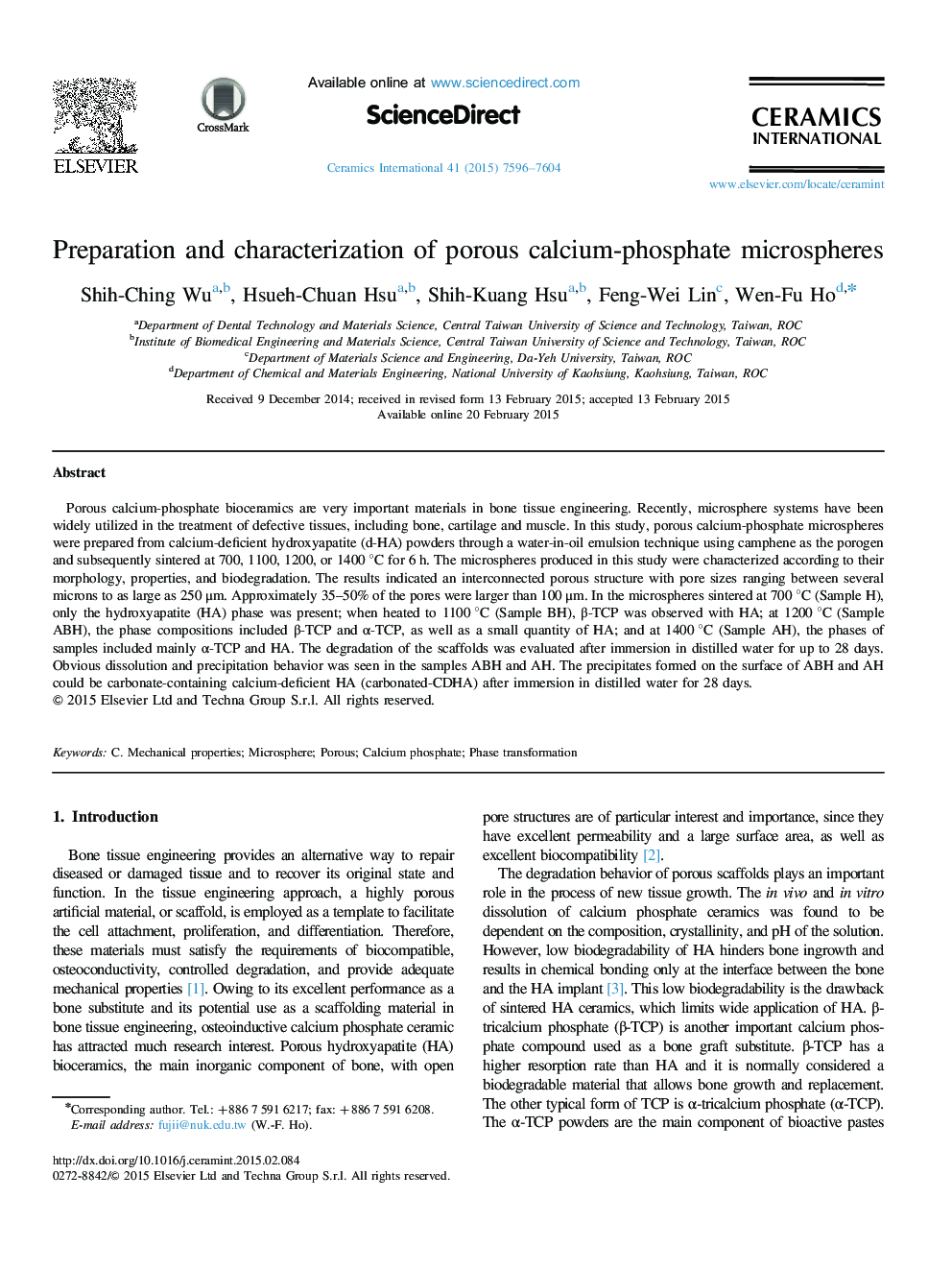| Article ID | Journal | Published Year | Pages | File Type |
|---|---|---|---|---|
| 1459758 | Ceramics International | 2015 | 9 Pages |
Porous calcium-phosphate bioceramics are very important materials in bone tissue engineering. Recently, microsphere systems have been widely utilized in the treatment of defective tissues, including bone, cartilage and muscle. In this study, porous calcium-phosphate microspheres were prepared from calcium-deficient hydroxyapatite (d-HA) powders through a water-in-oil emulsion technique using camphene as the porogen and subsequently sintered at 700, 1100, 1200, or 1400 °C for 6 h. The microspheres produced in this study were characterized according to their morphology, properties, and biodegradation. The results indicated an interconnected porous structure with pore sizes ranging between several microns to as large as 250 μm. Approximately 35–50% of the pores were larger than 100 μm. In the microspheres sintered at 700 °C (Sample H), only the hydroxyapatite (HA) phase was present; when heated to 1100 °C (Sample BH), β-TCP was observed with HA; at 1200 °C (Sample ABH), the phase compositions included β-TCP and α-TCP, as well as a small quantity of HA; and at 1400 °C (Sample AH), the phases of samples included mainly α-TCP and HA. The degradation of the scaffolds was evaluated after immersion in distilled water for up to 28 days. Obvious dissolution and precipitation behavior was seen in the samples ABH and AH. The precipitates formed on the surface of ABH and AH could be carbonate-containing calcium-deficient HA (carbonated-CDHA) after immersion in distilled water for 28 days.
